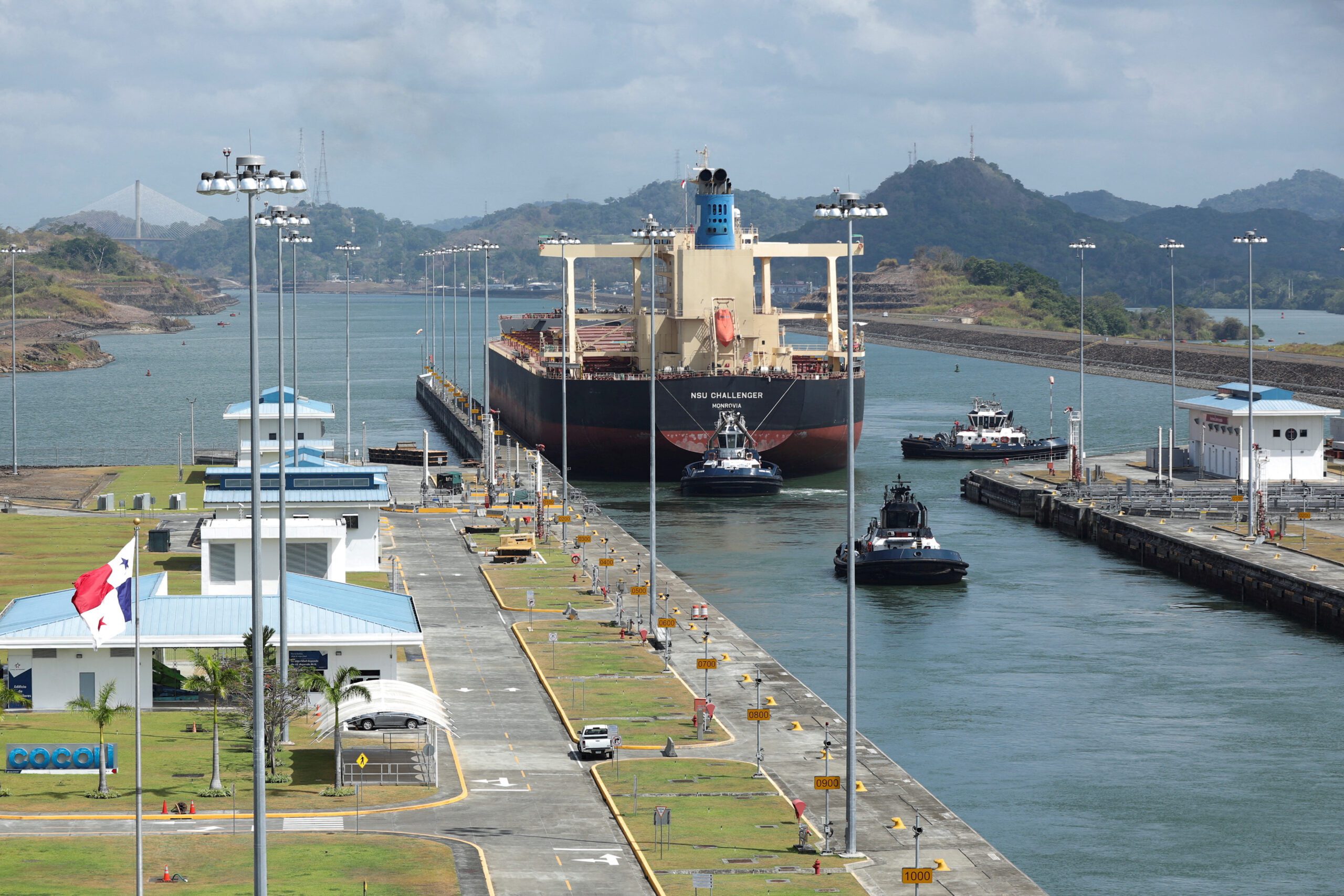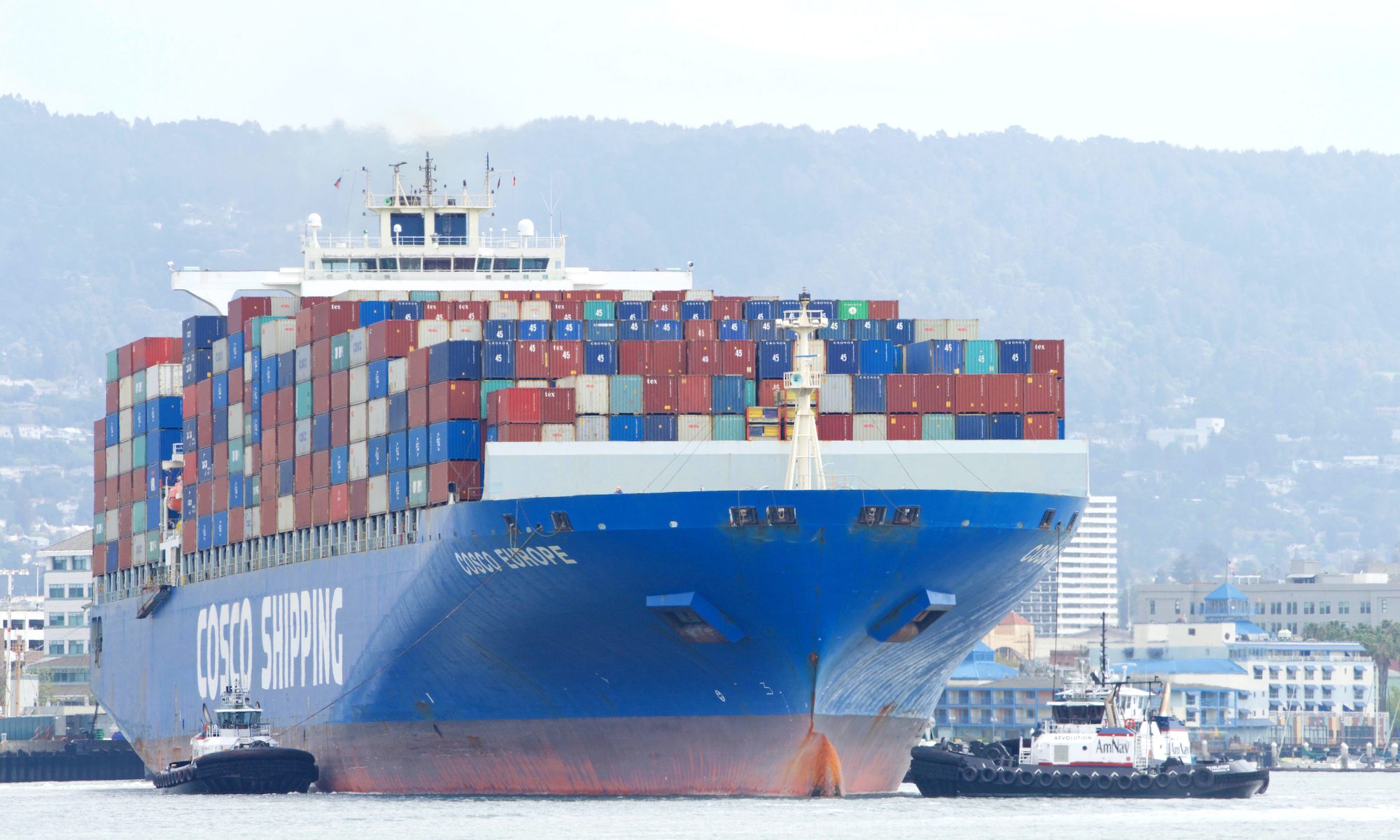(Bloomberg) —
The Panama Canal, the century-old engineering marvel that revolutionized global trade, is being squeezed shut by drought and forcing shippers worldwide to face a painful choice.
They can wait in line for days or weeks, as low water levels limit the number of ships passing through the 50-mile waterway, carrying cars, consumer goods, fruit and fuel. They can pay millions of dollars to jump ahead in the queue, if a ship with a booked reservation drops out. Or they can sail an entire continent out of the way, sending their ships around the southern tips of Africa and South America, or through the busy Suez Canal.
Each choice adds cost, at a time when governments around the world are struggling to tame inflation. And the bottleneck will only worsen in the coming months as Panama enters its annual dry season, which typically begins in December and lasts until April or May.
“We face less capacity, more trips, higher costs and a less efficient supply chain,” said Paul Snell, chief executive officer of British American Shipping, whose company moves about 20,000 to 40,000 containers per year. “Everyone’s going to have to get creative and decide what they’re going to do.”
Gatun Lake, which forms a key stretch of the canal system and provides fresh water for its locks, saw little rain this year, as El Niño triggered a withering drought. So the Panama Canal Authority has ratcheted back the number of ships allowed to pass, from an average of 36 to 38 per day in the past to an expected 18 in February, half the normal amount. The authority also reduced draft levels — how low a vessel can sit in the water — meaning some ships must carry less cargo. Even if the rains return on time next year, traffic congestion and draft restrictions will linger long into 2024.
Many companies, particularly those moving fuels from the US Gulf Coast to Asia, have been willing to pay extra to ensure their ships get through. The authority holds auctions whenever a ship with a reservation cancels, and slots this year have gone for as much as $4 million. A year ago, the average auction price was around $173,000, according to data from Waypoint Port Services. “It’s just astronomically out of control,” said Francisco Torné, one of the firm’s country managers for Panama.
Money for an auctioned slot comes on top of the canal’s usual transit fee, which depending on the vessel’s size can be close to $1 million. Companies spent $230 million on auctions this year through Nov. 20.
Other shippers opt for detours that can add thousands of miles and more than a week at sea — sometimes through perilous waters. The Pyxis Pioneer, carrying liquefied petroleum gas, in November steered through the wind-whipped Strait of Magellan near South America’s southernmost point, followed by a Chilean load of gasoline products headed to New York and an oil tanker from southern Mexico bound for the US Gulf. Ships from the Gulf Coast or eastern US that may have sailed to Asia via the canal now head in the opposite direction, rerouting around South Africa’s Cape of Good Hope or through Egypt’s Suez Canal.
Each route adds 10 days to three weeks to the trip, depending on how fast the vessel sails. According to Avance Gas Holding Ltd., about 50 very large gas carriers are now on return voyages to the US via the Suez Canal or the Cape of Good Hope, up from 10 vessels in July.
“I sleep better at night knowing that I am going around the cape or Suez and not waiting in line, especially when it starts to be really desperate and you pay $4 million,” said James Allen, vice president of liquefied natural gas chartering and operations at Cheniere Energy Inc., speaking at the Wood Mackenzie gas and LNG conference in London.
Shipping companies are trying to pass along the extra costs to their customers. Hapag-Lloyd AG, Mediterranean Shipping Co. and Maersk all have announced new Panama-related surcharges in recent months. Economist Inga Fechner of ING Research said the effect on commodity and consumer prices has been muted by sluggish global demand. But the higher shipping costs will have a trickle-down effect in the long run, ultimately hitting consumers.
“It’s getting more costly, and looking for alternative routes will increase costs and maybe also weigh on prices in the end,” she said.
Oil and gas vessels, container ships hauling all manner of cargo, and grain carriers dominate traffic through the canal. The US is a major exporter of grains — soybeans, corn, wheat — to Asia, much of it typically leaving the Gulf Coast and traveling through Panama. But low water levels on the Mississippi River have already prompted some American growers to put their grain on trains to the Pacific Northwest and ship it to Asia from there. Enrico Paglia, research manager at shipping services firm Banchero Costa, said overall US grain exports to Asia have fallen 26% this year compared to 2022, and grain flows through the canal have decreased 37% percent.
Should the canal bottleneck worsen, it’s likely other major grain exporters such as Brazil, Ukraine and Russia may step in to fill the gap for US products in Asia, Paglia said. Already, Brazilian grains have been more actively traded because of the canal’s increased restrictions, he said. “So, potentially, US grain exporters will be hit hardest by the disruption to trade flows,” Paglia said.
Snell of British American said the clogged canal forced his company to stop shipping fresh-cut ferns from Seattle to Rotterdam’s flower markets. The business found work-arounds for other products from the US West Coast, hauling nuts and dried fruit from California to Houston or Norfolk, Virginia by rail, then transferring them to container ships bound for Europe. But added transit time is an issue for fresh fruit, particularly from countries such as Chile and Peru that ship to the eastern US and Europe through the canal. Cherry season in Chile will start to peak in January, and grapes, plums, nectarines and blueberries all could have a hard time reaching market, said Ignacio Caballero, director of marketing for Frutas de Chile, a trade group representing Chilean fruit growers.
“Considering we are going to reach our peak of season at the peak of the problem in the canal, this affects us importantly,” he said.
Nikolay Pargov, chief revenue officer for container shipping platform Transporeon, said container ship operators are already booking alternative routes to avoid the canal for 2024. The rigid routes of container ships – which for some shipping companies have thousands of customers to consider for each vessel – make it more difficult to re-route them at the last minute.
“For shippers, they need to accept the longer transit times, and the financing of it,” he said.
© 2023 Bloomberg L.P.

 Join The Club
Join The Club











